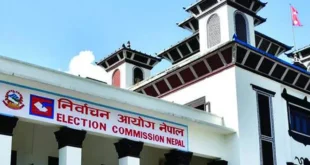News Desk
With news only about lockdown/shut down/closed offices, malls and everything else coming for the past 24-hours Indian streets are quiet now. Some see on roads are delivery drivers with faces covered by masks and palms with gloves. No construction, no manufacturing barring a few units making medicine, hand sanitizer and other essential commodities.
An all India unprecedented 21-day lockdown is a bid to stop the coronavirus pandemic. India being the world’s second most-populated country after China and fifth biggest economy across globe has till now restricted the coronavirus.
PM Narendra Modi has stated there is no sign of community spread, and the World Health Organization (WHO) has praised the kind of response India has given including grounding domestic and international flights and suspending visas.
Despite its size, and population of over 1230 crore India has at present appears to have avoided a complete pandemic hit. India has till now reported 562 confirmed cases including 9 deaths of coronavirus. South Korea, which has a population only 3.8% of India has reported over 9,000 cases. China, where the outbreak was first reported, has more than 81,000 confirmed cases in a population of 1.39 billion.
On Tuesday night, Indian PM announced a 21-day nationwide lockdown starting at midnight Wednesday. The order, the largest of its type yet to be issued globally, brought all Indians to stay home and all nonessential services shut down. But fears are that country remains susceptible to a wider, potentially more damaging outbreak.
Experts have cautioned that it is not testing enough people to know the correct spread of the virus. In an interview to a news agency WHO’s chief scientist Soumya Swaminathan said India had taken all the necessary steps. She added we always have to prepare for worse outcome.
How bad is the outbreak?
In India total, 15,000 tests have been done, compared with South Korea, where over 300,000 people out of its 52 million population got the test done. Professor OC Abraham, of the Christian Medical College in Vellore said India should test extensively, just as South Korea did. He said the only way you can control a disease like this is that you test early.
Balram Bhargava, director-general of the Indian Council of Medical Research, has his own opinion. He said there is no need for indiscriminate testing. At a press briefing on Sunday, he said the country has a test capacity of 60,000 to 70,000 per week. By comparison, the United Kingdom a country with 5% of the population size of India says it is hoping to increase its test capacity to 25,000 a day.
Modi has cautioned against being complacent, and said the assumption that the disease will not impact India is incorrect. What is significant is like in other countries, many of India’s confirmed cases have been connected to overseas travellers. The first six cases in the northwestern state of Rajasthan, for instance, were all contacts of the first case reported in New Delhi, who travelled to Italy.
Bellur Prabhakar, a professor of microbiology and immunology at the University of Illinois says, there are a few reasons why the number of confirmed cases in India do not match international trends. This could be due to a lack of testing.
A positive logic is coronavirus may thrive in colder conditions, and that it might not spread so efficiently in India, where temperatures are often more than 35-degrees Celsius. Already day temperature in northern part is above 27 degree Celsius on average.
But will it follow the pattern ascertained till now or change its way in India is yet to be known. Experts warned against drawing too many conclusions.
Why an outbreak is hard to control
It’s clear that an outbreak would be incredibly difficult to control in the country. In 2011, an Indian government report estimated that 29.4% of the country’s urban population live in low quality, semi-permanent structures or slums. Many of these homes don’t have toilet or running water. Then how to wash hands frequently.
This also raises question on social distancing as announced by the PM. The population density is worth giving a thought as there are 455 people per square kilometer according to World Bank statistics which is more than the world average of 60 people. So what applies to the rest of the world may not in India so smoothly.
Social distancing is challenging here, as you can not watch one and all and then all may not learn it with just one announcement or repeat broadcast on radio or TV for a few days. they haven’t practiced it well every before, said a senior professor in community medicine department at a UP based medical institute.
Lockdown a challenge too
The economic impact of a lockdown is big. And in India too telling people to stay home puts them at job risk. Though government has announced no layoffs no salary cuts but what once lockdown is over and then companies start the process. The impact may take months to go and government can’t tie hands of the companies for months together.
As per the estimates there were around 40 crore people in India’s labor market. Of those, more than half self-employed, and many casual workers with irregular work and were only paid for the days they worked.
Other difficulties
On top of all of these issues, India has an overburdened healthcare system. About 65000 doctors pass out every year but quality of the entire system is under question. State healthcare lacks staff and resources such as testing reagents and kits for medical staff.
WHO’s Swaminathan said, the health system across India is quite variable. She puts it that there are some states with very well-resourced, well-equipped health systems, and others which are weaker. So the focus really needs to be both in short term and the medium to long term on strengthening the health systems.
As per the World Bank, India spends about 3.66% of its GDP on health but all this is well enough for healthcare and meeting such crisis is a big question.
 Jubilee Post News & Views
Jubilee Post News & Views






